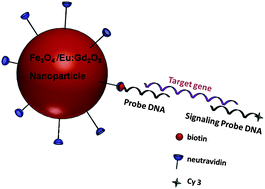Quantitative gene monitoring of microbial tetracycline resistance using magnetic luminescent nanoparticles
Abstract
A magnetic/luminescent

* Corresponding authors
a
Department of Civil Engineering, Auburn University, Auburn, AL, USA
E-mail:
ason@auburn.edu
Fax: +1 334 844 6290
Tel: +1 334 844 6260
b Department of Mechanical and Aeronautical Engineering, University of California, Davis, CA, USA
c
Department of Land, Air, and Water Resources, University of California, Davis, CA, USA
E-mail:
krhristova@ucdavis.edu
Fax: +1 530 752 1552
Tel: +1 530 752 2412
A magnetic/luminescent

 Please wait while we load your content...
Something went wrong. Try again?
Please wait while we load your content...
Something went wrong. Try again?
A. Son, I. M. Kennedy, K. M. Scow and K. R. Hristova, J. Environ. Monit., 2010, 12, 1362 DOI: 10.1039/C001974G
To request permission to reproduce material from this article, please go to the Copyright Clearance Center request page.
If you are an author contributing to an RSC publication, you do not need to request permission provided correct acknowledgement is given.
If you are the author of this article, you do not need to request permission to reproduce figures and diagrams provided correct acknowledgement is given. If you want to reproduce the whole article in a third-party publication (excluding your thesis/dissertation for which permission is not required) please go to the Copyright Clearance Center request page.
Read more about how to correctly acknowledge RSC content.
 Fetching data from CrossRef.
Fetching data from CrossRef.
This may take some time to load.
Loading related content
